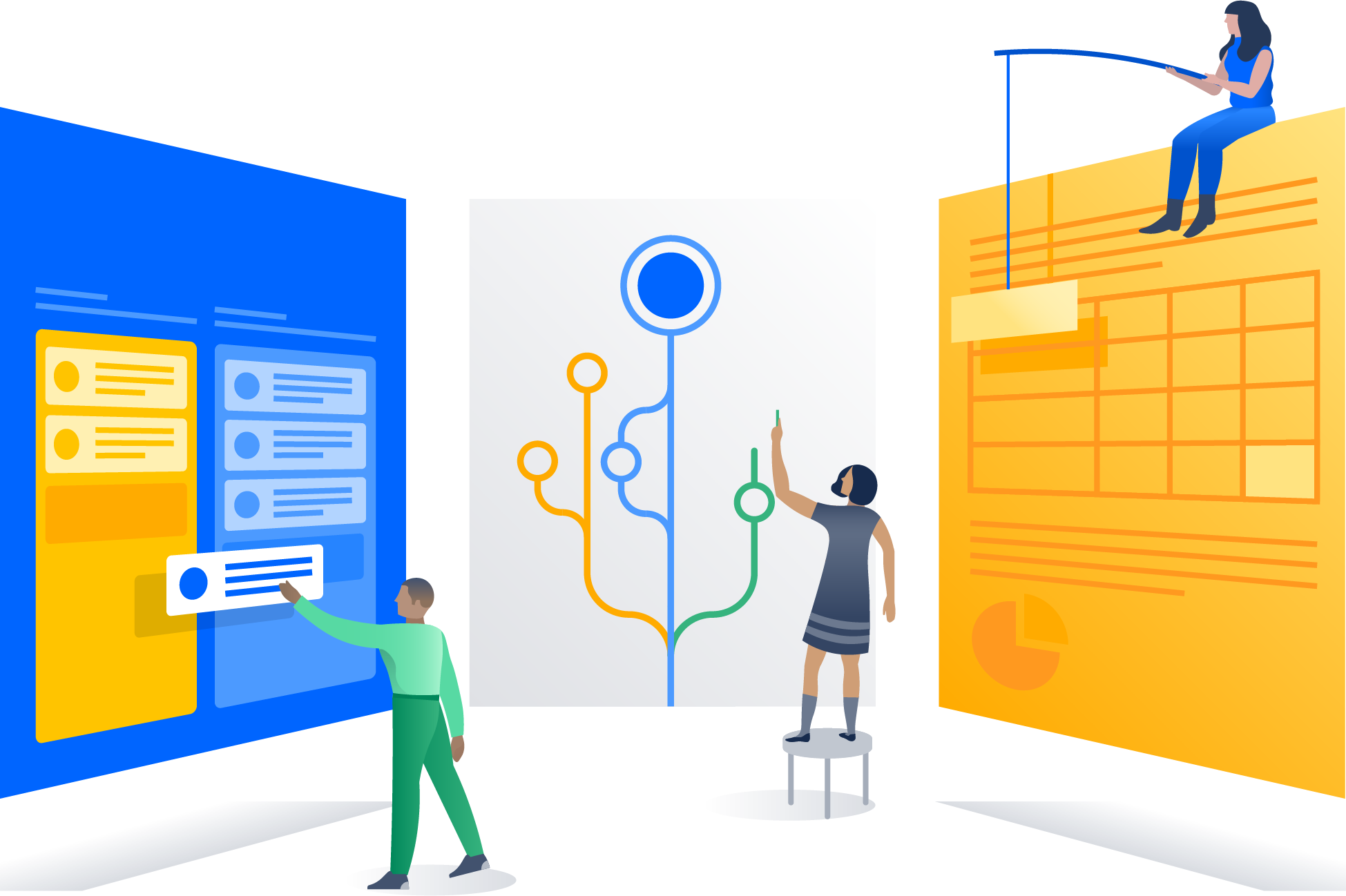DevOps Maturity Model
DevOps isn't a destination, it's a journey towards a frequent and more reliable release pipeline, automation and stronger collaboration between development, IT and business teams. This maturity model is designed to help you assess where your team is on their DevOps journey.
Question 1 of 10
How would you describe the organizational and team structure for developing your products?
Question 2 of 10
How would you describe how your dev and ops teams share tools?
Question 3 of 10
How would you describe the project prioritization process in your company?
Question 4 of 10
What best describes your testing environment?
Question 5 of 10
What is your organizational structure around service delivery?
Question 6 of 10
How would you describe your typical release process for key projects?
Question 7 of 10
How often do you deploy code to production?
Question 8 of 10
In general, how do applications perform once released into production?
Question 9 of 10
What is the ratio to unplanned / bugfix work vs. new features / improving infrastructure?
Question 10 of 10
How quickly can developers see the results of the integration / unit / etc. testing?
Thank you
Assessment Level
Base
Congrats, it looks like you're making the first strides in your DevOps journey!
People and culture first
The first step in moving to DevOps is to pull from agile principles - people first, then process and tools.
Culture is the foundation on which every successful team is built and is a core ingredient of a DevOps implementation. A DevOps culture brings a sense of shared responsibility across teams, yields faster time to market and faster resolution times, and helps mitigate unplanned work.
One small but impactful way to initiate culture change is to run workshops that identify areas of improvement between your dev & ops teams. To help, we've built a DevOps playbook.
Did you know?
Employees in high-performing DevOps teams were 2.2x more likely to recommend their organization as a great place to work.
Source: 2016 State of DevOps Report

Hungry for more?
Check out our DevOps guides and best practices to help you on your DevOps journey.
Assessment Level
Beginner
Congrats, it looks like you're on your way with your DevOps journey!
Go lean with Agile & Git
In looking at the three ways of DevOps - flow, amplify feedback, and continuous learning and experimentation - each phase flows into the other to break down silos and inform key stakeholders.
To excel in 'flow' teams need to make work visible across all teams, limit work in progress, and reduce handoffs to start thinking as a system, not a silo. One way to start approaching 'flow' is through practices like agile. Find out more here.
Another way to excel in 'flow' is by moving to distributed version control systems (DVCS) like Git, which is all about quick iterations, branching and merging - all things you need in a lean DevOps environment. Learn more here.
Did you know?
90% of agile teams use a DVCS (like Git).
Source: 2016 Atlassian Software Trends Report

Hungry for more?
Check out our DevOps guides and best practices to help you on your DevOps journey.
Assessment Level
Intermediate
Congrats, it looks like you're on your way with your DevOps journey!
Continuous integration and delivery
DevOps is all about releasing early and often. To do so, you need a strong continuous integration pipeline that tests, packages, and delivers your releases.
Building an automated delivery pipeline doesn't have to happen overnight. Start small, by writing tests for every bit of new code, and iterate from there.
Did you know?
19% of respondents in your category said they deploy code to production weekly.
Source: 2017 Atlassian and xMatters DevOps Maturity Model report

Hungry for more?
Atlassian does DevOps. Check out our processes.
Assessment Level
Advanced
Congrats, it looks like you're on your way with your DevOps journey!
Amplify feedback for faster resolution
In looking at the three ways of DevOps - flow, amplify feedback, and continuous learning and experimentation - each phase flows into the other to break down silos and inform key stakeholders.
Amplifying feedback can help you catch failures before they make it downstream, and accelerate your time to resolution. One easy way to speed up feedback is by automating notifications so that teams are alerted to incidents or bugs when they happen. See how Atlassian's Site Reliability Engineers do incident management and practice ChatOps for conversation-driven development.
Did you know?
27% of respondents said incidents and alerts are automatically routed - how do you compare?
Source: 2017 Atlassian and xMatters DevOps Maturity Model report

Hungry for more?
Amplify feedback using tools that provide cross-team visibility.
Assessment Level
Expert
Whoa, DevOps done right! But there's always room for improvement, amiright?
Technology drives culture
We see DevOps as a lifecycle with each phase flowing into the other to break down silos and inform key stakeholders along the way. You plan the work, then build it, continuously integrate it, deploy it, finally support the end product and provide feedback back into the system.
The tools and technology your teams use can drive better automation and collaboration between teams. We've put together a list of some we use - check it out.
Looking for better tooling to support your DevOps journey?
Did you know?
40% of teams practice ChatOps for conversation driven development during remediation. If you just said "huh, what is ChatOps?" or "I think I'm doing ChatOps, maybe?" - check out a real life scenario and pro-tips.

Hungry for more?
It might be time to check in on how your teams are doing and identify areas for improvement. Check out the DevOps Team Playbook today.